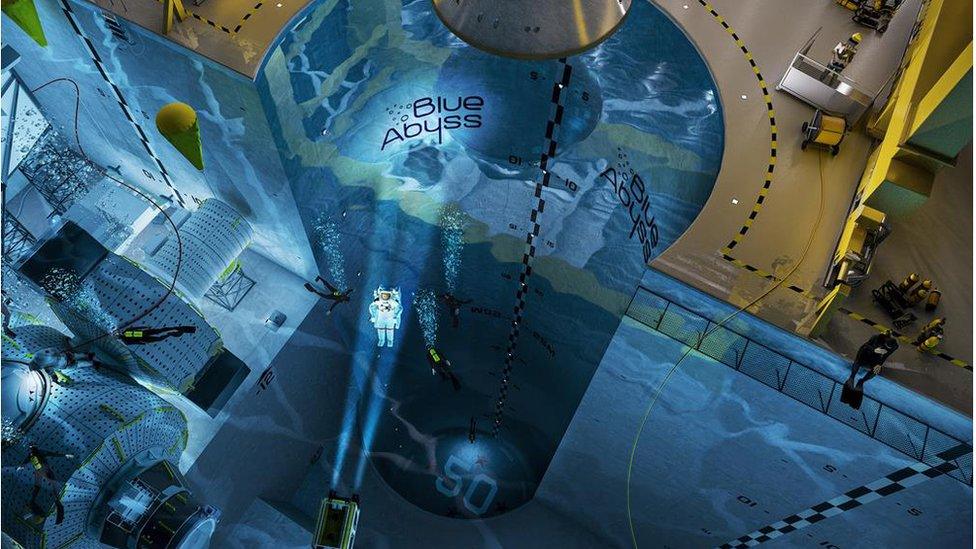Blue Abyss announce RAF Henlow space and sea centre
- Published

Plans include a 50m-deep pool
The world's first commercial space and deep sea research and training centre is to be developed at a soon-to-close RAF station.
The £120m Blue Abyss facility will be built at RAF Henlow in Bedfordshire.
It is part of a multimillion-pound plan to develop a science, innovation and technology park at the base, which is due to close by 2020.
Plans include the world's biggest 50m deep pool, a hotel, and an astronaut training centre.
A "human performance centre" will also enable divers, astronauts and top athletes to perform at the peak of their potential, developers Blue Abyss said.
The company hopes it will help pave the way for commercial space flight by enabling "ordinary people to undergo a full astronaut training programme".
More on this and other news from Bedfordshire
This will include a "human centrifuge" for high-g astronaut training - designed to prevent g-force-induced loss of consciousness at high acceleration rates.

The site will cost about £120m to develop
In the pool, offshore technology for the oil and gas industries could be tested as well as submersibles, aiding exploration in "extreme environments".
Designed by London's Gherkin architect Robin Partington, it is hoped work will start at the end of the year and it will begin operating in 2019, bringing about 160 permanent jobs once opened, including a specialist diving team and operational staff.

The pool will be deeper than NASA's own 12m (40ft) deep training pool in Houston, Texas
The plans were revealed at an event at Cranfield University, attended by representatives of the European Space Agency (ESA), Romanian cosmonaut Dumitru-Dorin Prunariu who is a Blue Abyss non-executive director, and representatives from central and local government.
The company said the facility would "provide an arena for pioneering research and development into extreme environments, which in turn will enable better human performance in deep sea and space environments by encouraging innovation".
- Published7 April 2016

- Published22 July 2015
